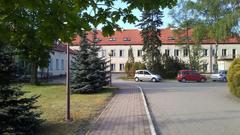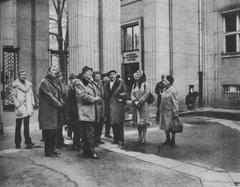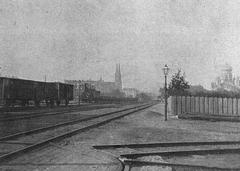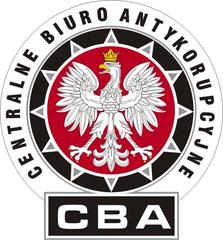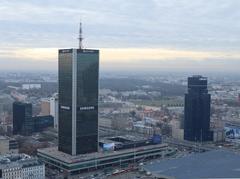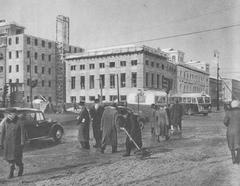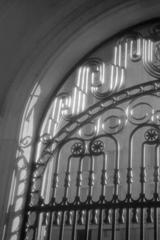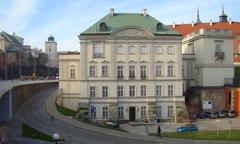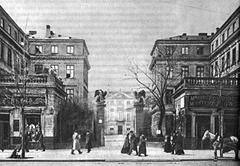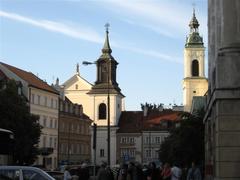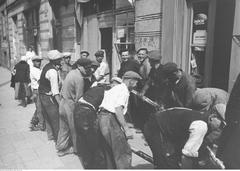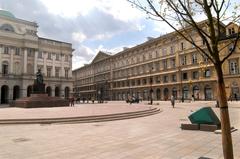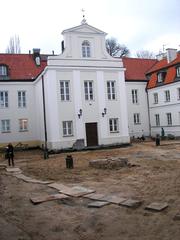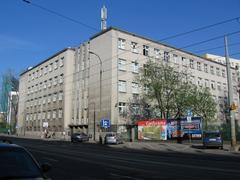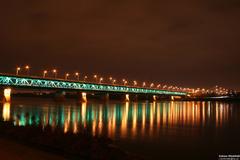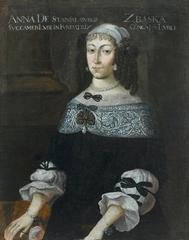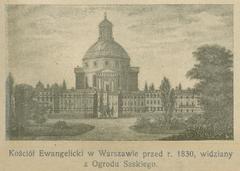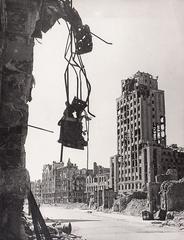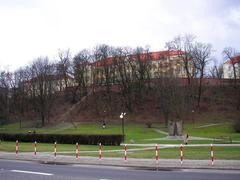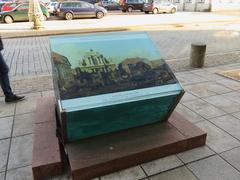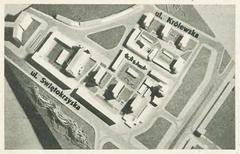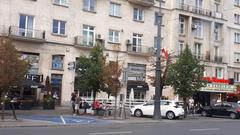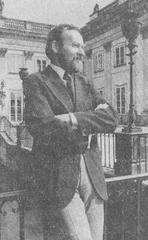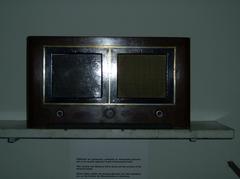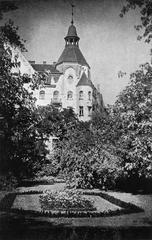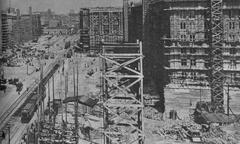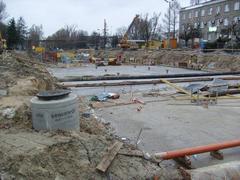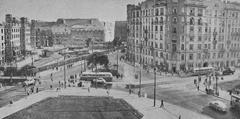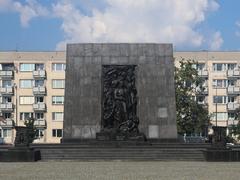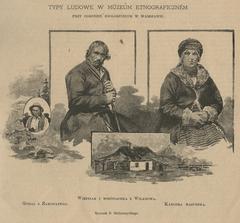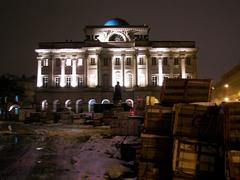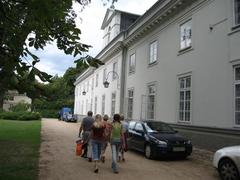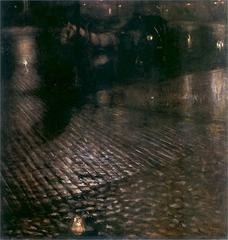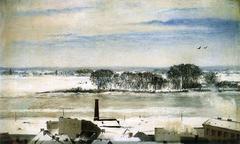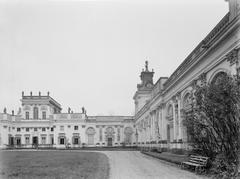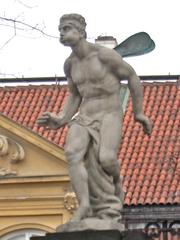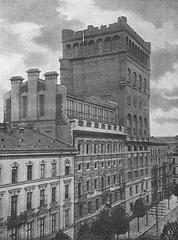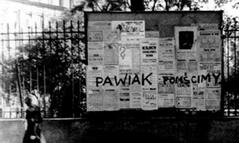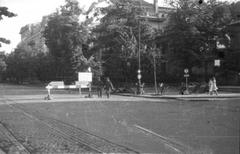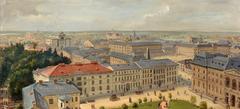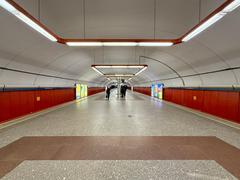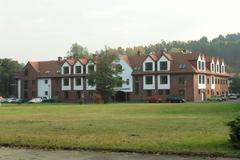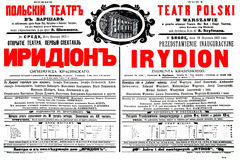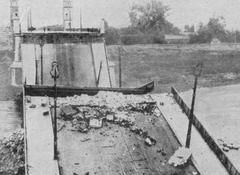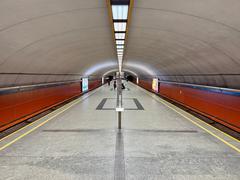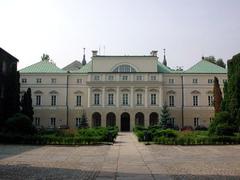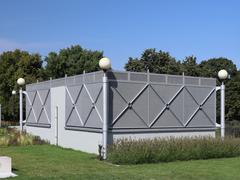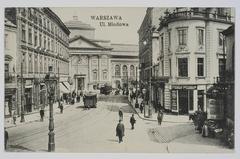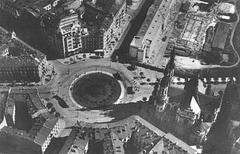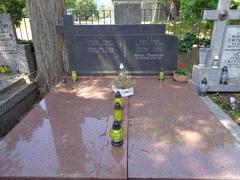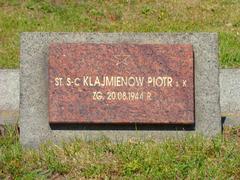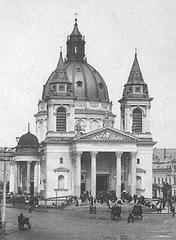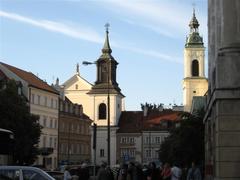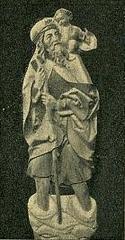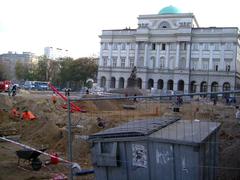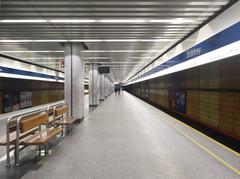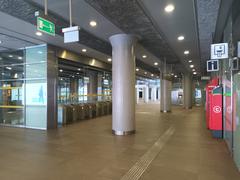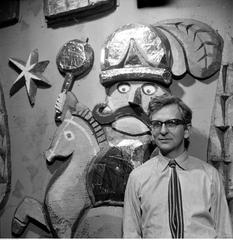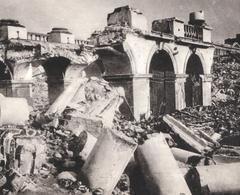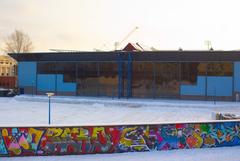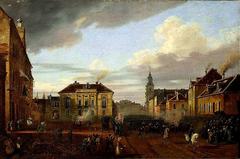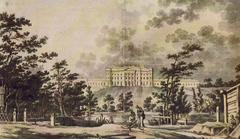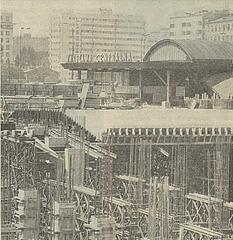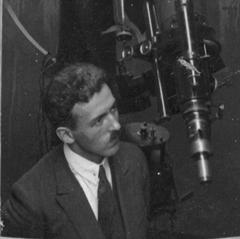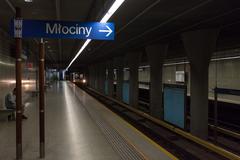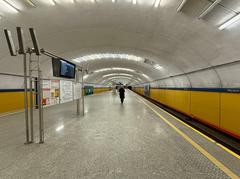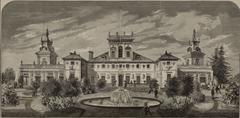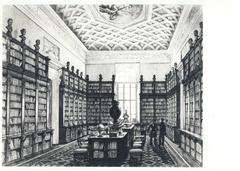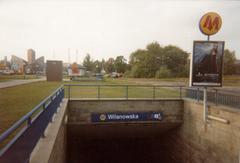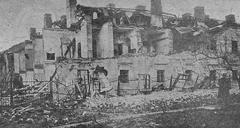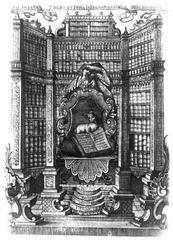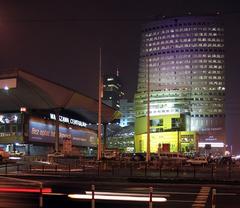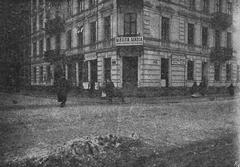Visiting Keret House: Hours, Tickets, and Travel Tips
Date: 24/07/2024
Introduction
Discover the world’s narrowest house, the Keret House, located in the vibrant Wola district of Warsaw, Poland. This unique architectural marvel, designed by Polish architect Jakub Szczęsny, is a testament to innovative urban design and historical remembrance. Constructed in 2012, Keret House is ingeniously wedged into a four-foot-wide crevice between two buildings, showcasing the potential of urban infill. Measuring only 28 inches at its narrowest and four feet at its widest, it stands as the narrowest house globally (Atlas Obscura).
However, Keret House is more than just an architectural curiosity. It serves as a poignant memorial to Szczęsny’s family members who perished in the Holocaust, adding a profound layer of historical and cultural significance. Named after Israeli filmmaker and author Etgar Keret, who was its first tenant, the house has become an artistic and literary landmark, attracting global attention and fostering creative exchange (Atlas Obscura). Classified legally as an ‘art installation,’ the house challenges traditional notions of residential space, blending art and functionality in a confined area. With innovative solutions for electrical and sewage systems, Keret House exemplifies human ingenuity and adaptability (Atlas Obscura).
Table of Contents
- Introduction
- History and Significance of Keret House
- Visitor Information for Keret House
- Cultural Impact and Visitor Experience
- Conclusion
- Frequently Asked Questions
History and Significance of Keret House
Architectural Genesis and Design
The Keret House, designed by Polish architect Jakub Szczęsny, is a marvel of modern architecture and a testament to innovative design. Constructed in 2012, this unique structure is wedged into a four-foot-wide crevice between two buildings in Warsaw, Poland. The house stretches over 30 feet tall but is only 28 inches wide at its narrowest point and four feet wide at its widest, making it the narrowest house in the world (Atlas Obscura).
Memorial to the Holocaust
The Keret House is not just an architectural curiosity but also a poignant memorial. Szczęsny built the house as a tribute to his family members who perished in the Holocaust. This emotional underpinning adds a layer of historical and cultural significance to the structure, transforming it from a mere architectural feat to a symbol of remembrance and resilience (Atlas Obscura).
Naming and Initial Occupancy
The house is named after Etgar Keret, an Israeli filmmaker and author, who was spontaneously asked by Szczęsny to be the first tenant. Keret agreed and lived there for several weeks, adding a layer of literary and artistic significance to the house. This initial occupancy by a renowned figure helped to elevate the house’s profile and attract global attention (Atlas Obscura).
Legal Classification and Practical Use
Legally, the Keret House is classified as an “art installation” because it does not meet Polish housing codes. Despite this, it functions as a residence, albeit an unconventional one. This dual identity as both an art piece and a living space challenges traditional notions of what constitutes a home and pushes the boundaries of architectural design (Atlas Obscura).
Structural and Functional Innovations
Due to its minuscule size, the Keret House lacks room for traditional electrical and sewage systems. Szczęsny ingeniously solved the electrical issue by sourcing power from the two adjacent buildings. For sewage disposal, the house employs a customized design that bypasses city standards. These innovative solutions highlight the adaptability and resourcefulness required to make such a narrow living space functional (Atlas Obscura).
Visitor Information for Keret House
Visiting Hours and Tickets
The house is generally open to visitors from 10 AM to 5 PM, but it is advisable to check the official website for any changes in schedule. Tickets are available online and at the entrance.
Accessibility and Travel Tips
The house is located in the Wola district of Warsaw, easily accessible by public transport. Visitors should be prepared for the cramped interior and plan their visit accordingly.
Special Events and Guided Tours
Occasionally, the house hosts art exhibitions and literary readings. Guided tours can be booked in advance, providing deeper insights into the house’s history and design.
Photographic Spots
The narrow facade and the juxtaposition with the surrounding buildings offer unique photographic opportunities.
Cultural Impact and Visitor Experience
Spatial Constraints and Interior Layout
The interior of the Keret House is as fascinating as its exterior. With just 46 square feet of floor space, the house manages to fit a bedroom, a bathroom, a kitchen, and a two-beverage refrigerator across three floors. The first floor features only a staircase leading to the second floor. When retracted, this staircase creates a small but functional living room. To access the third floor, one must climb a white ladder, adding to the house’s quirky charm (Atlas Obscura).
Symbolism and Broader Implications
The Keret House stands as a symbol of human ingenuity and the ability to adapt to extreme spatial constraints. In a city like Warsaw, where space is at a premium, the house challenges conventional architectural norms and offers a radical solution to urban living. Its existence prompts broader discussions about the future of housing in densely populated cities and the potential for innovative design to address space limitations (Atlas Obscura).
Influence on Modern Architecture
The Keret House has influenced modern architecture by demonstrating that even the most unorthodox spaces can be transformed into functional living areas. Its success has inspired architects and designers worldwide to think creatively about space utilization and to explore unconventional solutions to urban housing challenges. This influence extends beyond Warsaw, contributing to a global dialogue on sustainable and innovative architectural practices (Atlas Obscura).
Future Prospects and Preservation
As an art installation and a functional residence, the Keret House continues to attract attention and admiration. Its future prospects include potential expansions of its use as a creative residency and further integration into Warsaw’s cultural landscape. Preservation efforts are crucial to maintaining its structural integrity and historical significance, ensuring that it remains a symbol of innovation and resilience for future generations (Atlas Obscura).
Conclusion
In summary, the Keret House is a remarkable blend of art, architecture, and history. Its narrow dimensions and innovative design make it a unique landmark, while its role as a memorial and cultural hub adds layers of significance. Visitors to Warsaw can experience this extraordinary structure firsthand, gaining insights into the creative possibilities of urban living and the enduring impact of historical memory.
Frequently Asked Questions
Q - What are the visiting hours for Keret House? A - The visiting hours for Keret House are generally from 10 AM to 5 PM.
Q - How do I get tickets for Keret House? A - Tickets for Keret House can be obtained online or at the entrance.
Call to Action
For more updates and information, download our mobile app Audiala, check out other related posts, or follow us on social media.
References
- Atlas Obscura, 2024, Keret House
- The Unique Poland, 2024, Keret House in Warsaw: The World’s Narrowest Building
- Mad Facts Journey, 2024, Poland Narrowest House
- ArchDaily, 2024, Inside the Keret House: The World’s Skinniest House by Jakub Szczęsny
- Holidify, 2024, Keret House Sightseeing
- Wikipedia, 2024, Keret House




